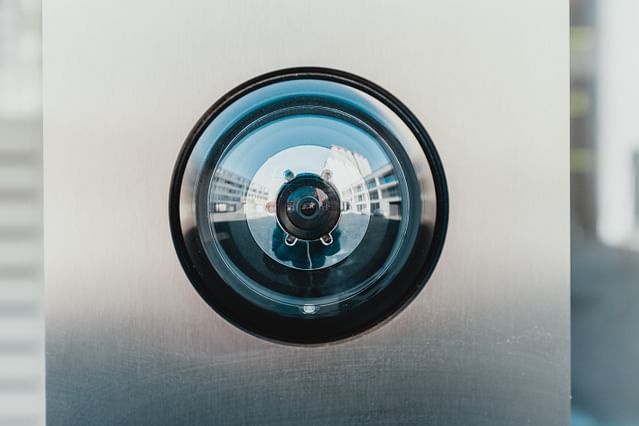
Building Your DIY Smart Home Security System: Tips and Tricks for Protecting Your Home
In today's world, home security is more important than ever. But with the advent of smart home technology, protecting your home and loved ones has become easier and more efficient than ever before. In this blog post, we'll explore how you can build your DIY smart home security system using smart cameras, sensors, and alarms, and learn how to enhance the safety of your home with automated security features and remote monitoring options.
Smart Cameras: The Eyes and Ears of Your Smart Home Security System
When it comes to home security, smart cameras are a must-have. These devices are designed to keep an eye on your property, detect suspicious activity, and even alert you in case of a break-in. There are plenty of smart cameras available on the market, but for the best results, we recommend investing in cameras that offer high-resolution video recording, motion detection, and night vision capabilities. Some of the most popular options include the Nest Cam, Amazon Cloud Cam, and Arlo Pro.
Once you've purchased your smart cameras, you'll need to install them in strategic locations around your home. Inside your front and back doors are great options, as well as any vulnerable spots where burglars may try to gain entry, such as windows or a garage entrance. You can also place cameras on your property outdoor to monitor the perimeter of your house. Make sure to follow the manufacturer's instructions for installation and setup, and secure the cameras properly so they can't be easily tampered.
Smart Sensors: The Key to Detecting Intruders
Smart sensors are another essential component of your DIY smart home security system. These devices detect movement, temperature changes, and other changes in your environment that may signal a break-in. Some sensors are designed to trigger an alarm, while others send an alert to your smartphone or other device, so you can take immediate action. Popular sensors include door and window sensors, motion sensors or sound sensors.
To install door and window sensors, you'll need to place these sensors on the frames of the doors or windows. When the doors or windows are closed or opened, the sensors will detect changes in magnetic fields (or ultrasonic differences in the ambient sound for sound sensors), and will trigger an alert if someone tries to open the locked door or window. Motion sensors can be mounted on the ceiling or on walls, and some models offer pet immunity features to avoid false alarms when pets enter the area. If you want an ultra-secure system, even water sensors can be used to detect flooding and water damage especially for basements and crawlspaces.
Smart Alarms: The Final Line of Defense Against Intruders
To complete your DIY smart home security system, you'll need to invest in smart alarms. These devices are designed to emit loud, attention-grabbing sounds in case of a break-in, and can be programmed to alert your smartphone, your neighbors or emergency services. There are a variety of smart alarms available on the market, from sirens to bells, and you can choose the ones that best suit your needs.
Smart alarms are typically paired or integrated with smart sensors throughout your home, ensuring that if a door or window sensor is triggered, the alarm will be activated. This helps to deter burglars and increase the chances of catching intruders before they can escape. If you're using a third-party alarm system, make sure to check whether it's compatible with your smart home devices.
Automated Security Features: Making Your Smart Home System More Efficient and User-Friendly
One of the biggest advantages of smart home technology is the ability to automate your home and make your life easier. When it comes to home security, automation can help you accomplish a variety of tasks, from turning on lights when motion is detected, to sending you alerts when someone enters your property.
For example, integrated smart lighting can be used to create the illusion that someone is home, which can deter potential burglars, or lights can be triggered by motion detectors outside your home. Smart thermostats allow you to automate temperature settings, while smart locks can be programmed to lock and unlock automatically when you leave or arrive at home.
Remote Monitoring Options: Keeping an Eye on Your Home No Matter Where You Are
All of the components of your DIY smart home security system can be monitored and controlled remotely, using your smartphone, tablet, or other devices that have access to the Internet. This means that you can keep an eye on your home no matter where you are, and receive real-time alerts if there's any suspicious activity.
Many smart home security systems offer advanced monitoring features, such as live video streaming, custom notifications, and 24/7 technical support. With remote monitoring, you're not only keeping an eye on your home, but you're also protecting your loved ones and giving yourself peace of mind.
Conclusion
Building your DIY smart home security system with smart cameras, sensors, and alarms is a great way to enhance the safety and security of your home. By investing in high-quality devices, automating your home, and taking advantage of remote monitoring options, you can enjoy the latest in modern technology while keeping burglars and intruders at bay. With a little bit of effort and some basic knowledge of smart home automation, you can build a smart home security system that meets all your needs and helps you protect what matters most.
Posted on: Jan 10, 2023 Last updated at: Apr 10, 2023